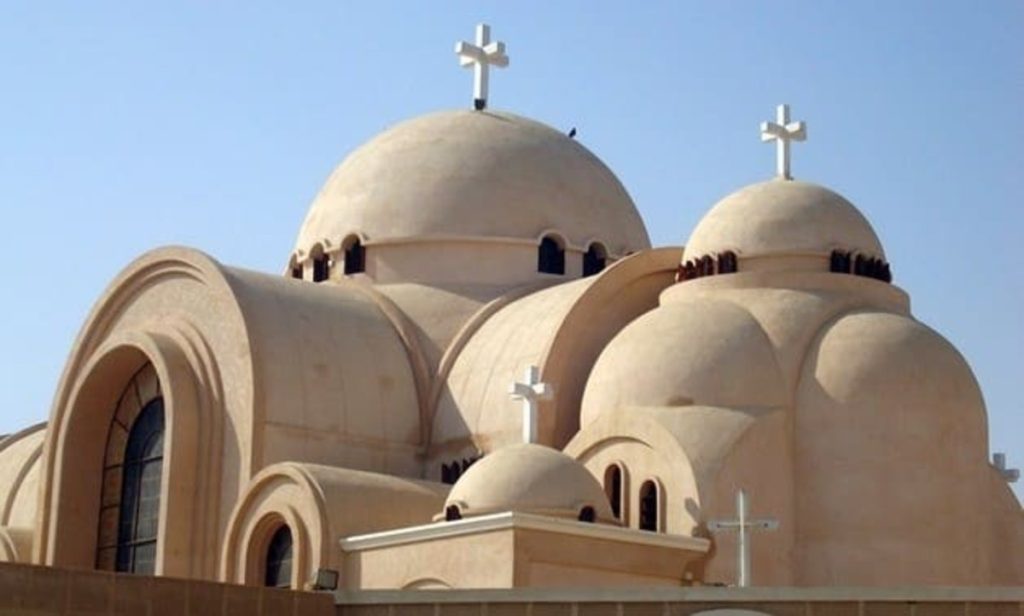The Copts of Egypt: Copts are a fascinating group with deep roots in North Africa, particularly Egypt, where they represent a significant minority. Their heritage stretches back to antiquity, making them one of the oldest Christian communities in the world. Originally, the term “Copt” referred to all Egyptians, but over time, it has come to specifically denote the native Christian population, particularly in the context of post-Islamic conquest changes in the region.
The Coptic community is primarily associated with the Coptic Orthodox Church of Alexandria, which is part of the larger Oriental Orthodox communion. However, there are also Coptic Catholics and Evangelical Copts, illustrating the diversity within this group. Despite facing periods of persecution and challenges related to their religious and ethnic identity, Copts have played a pivotal role in the cultural and intellectual history of the Middle East, particularly during the Arab Renaissance.
Copts today are well-integrated into Egyptian society yet maintain distinct cultural characteristics, including a higher tendency towards certain educational and economic achievements. Interestingly, while they share many cultural traits with other Egyptians, many Copts do not identify with Arab identity, associating it instead with Islam and Islamism.
Their story is a testament to the resilience and enduring culture of one of the world’s oldest Christian communities. Whether discussing their contributions to business, education, or politics, the Coptic experience is a critical part of the broader narrative of the Middle East. What more could you want in such a rich and layered history? If you’re fascinated by the intersections of culture, religion, and identity, diving into the history of the Copts is truly an enlightening journey!
Etymology
Alright, let’s dive into the fascinating history behind the word “Copt.” It’s like a journey through time that takes us all the way back to ancient Egypt! So, the term “Copt” that we use today actually has roots in 17th-century Neo-Latin as Coptus or Cophtus. But where did they get that? From Arabic! In Arabic, “Copt” is qubṭ or qibṭ, which is their way of referring to the Egyptian Christians.
Now, let’s trace it back even further. This Arabic word was adapted from an older Coptic word, either aiguption or kuptaion, depending on the dialect. And guess what? Those Coptic words were themselves adaptations of the Greek term Aigýptios, which means “Egyptian.” It’s like a linguistic game of telephone!
Speaking of Greek, the term Aígyptos (yes, that’s where “Egypt” comes from) actually made its debut in Mycenaean Greek as a3-ku-pi-ti-jo, which means “Egyptian” too. This word is believed to have originated from an ancient Egyptian phrase describing a temple dedicated to the god
The construction logistics also indicate that the Khafre funerary complex, including his Valley Temple and the causeway connecting it to his pyramid, was established prior to the planning of the Sphinx. This is evident from the dismantling of the northern perimeter-wall of the Valley Temple to build the Sphinx temple and the positioning of the south wall of the Sphinx enclosure, which aligns with the pre-existing causeway. The lower base level of the Sphinx temple further supports the notion that it was built after the Valley Temple, integrating these structures into a comprehensive funerary complex dedicated to Khafre.
Ptah in Memphis. Imagine that—what started as the name of a temple became the name for the whole country!
Now, the Greek term Aigýptios was specifically used to describe the local Egyptians during the Roman era. But after the Arabs conquered Egypt in the 7th century, the term began to be exclusively used for Egyptian Christians.
And there’s more! Some think that the Arabic word for “Copt” might be linked to the Greek name of the town Kóptos in Upper Egypt, which would have solidified “Copt” as the go-to term.
In the 20th century, as Egyptian nationalism gained momentum, some intellectuals started using the term in a more historic sense, tying modern Egyptians back to their pharaonic roots.
Isn’t it cool how a single word can carry so much history and change its meaning over centuries? What more could you want from a trip down the etymological lane?
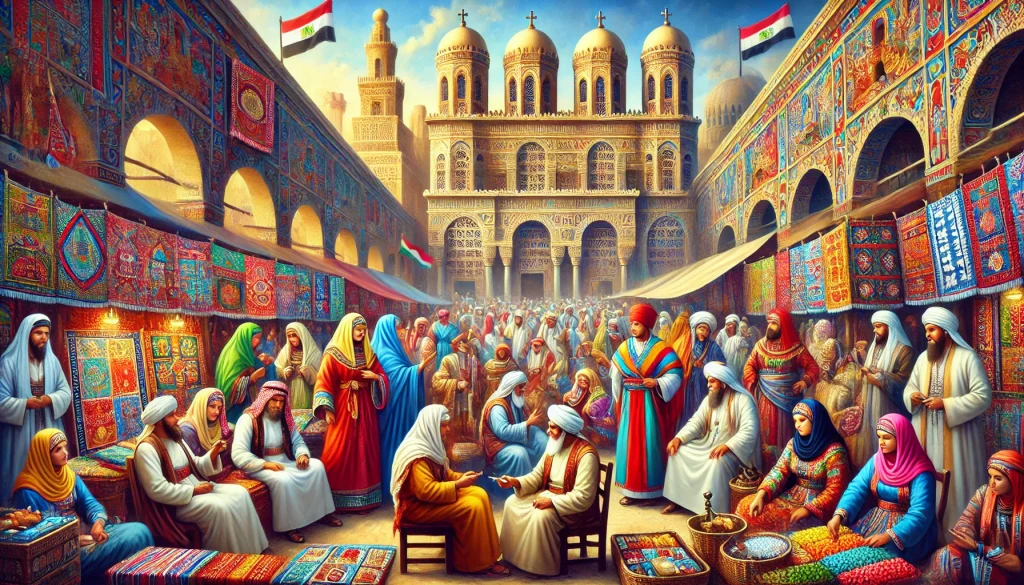
History
Let’s dive into the fascinating story of the Coptic Orthodox Church of Alexandria and the roots of Christianity in Egypt. Picture this: it’s the bustling, diverse streets of ancient Alexandria, where cultures collide and history is being made. Now, imagine a figure central to this story—Saint Mark, right after Christ’s ascension, arriving in Alexandria around 42 AD during Emperor Claudius’ reign. That’s where our journey begins.
Saint Mark wasn’t just passing through; he left a deep imprint on Egypt by founding the Christian community in Alexandria. It’s kind of epic when you think about how quickly Christianity spread from there. Within just a few decades, it wasn’t just an urban faith; it reached into the heart of rural Egypt. By translating the scriptures into the local language, which today we call Coptic (back then, it was simply known as the Egyptian language), Christianity truly became a faith for everyone, from city dwellers to farmers.
By the 200th year AD, Christians weren’t a minority anymore; they had become the majority of Egypt’s population. Alexandria didn’t just stay a city with a strong Christian community; it rose to prominence as one of the four Apostolic Sees—think of it as one of the major league players in early Christendom, second only to Rome!
Fast forward to today, and the Copts still have a unique place in Egypt, making up about 5 to 20% of the population. They’ve held on to their faith through centuries, maintaining a rich tradition that dates back to the very beginnings of Christianity.
Isn’t it fascinating how the faith spread and grew, shaped by its times and challenges? What more could you want from a legacy that continues to thrive after nearly two millennia?
Contributions to Christianity
Let’s dive into how the Copts in Egypt have massively shaped Christian traditions—talk about a heritage! Way back in 190 AD, the Catechetical School of Alexandria popped up, making it the oldest school of its kind in the world. Picture this: founded by the scholar Pantanaeus, this wasn’t just any school. It was a buzzing hub where big thinkers like Athenagoras, Clement, and the theology whiz Origen hung out. These guys were not just about theology; they delved into science, math, and the humanities too. And get this, they were already using a Q&A approach for discussions centuries before it was cool!
But the Copts didn’t stop there—they were also the pioneers of monasticism, which pretty much influenced Christian monks worldwide. Imagine deserts dotted with monasteries and hermits seeking a life of discipline and spiritual growth. Big names like Anthony the Great and Shenouda the Archimandrite were like the celebrities of their time for the devout.
Travelers and scholars like Saint Basil and Saint Jerome were so inspired by these desert dwellers that they took these ideas back home, which influenced monastic practices across Europe. Even Saint Benedict, who founded the Benedictine Order, was taking a leaf out of the Egyptian playbook.
So, when you think about the contributions of the Copts, it’s clear they were way ahead of their time, laying down some serious spiritual foundations! What more could you want from a legacy, right?
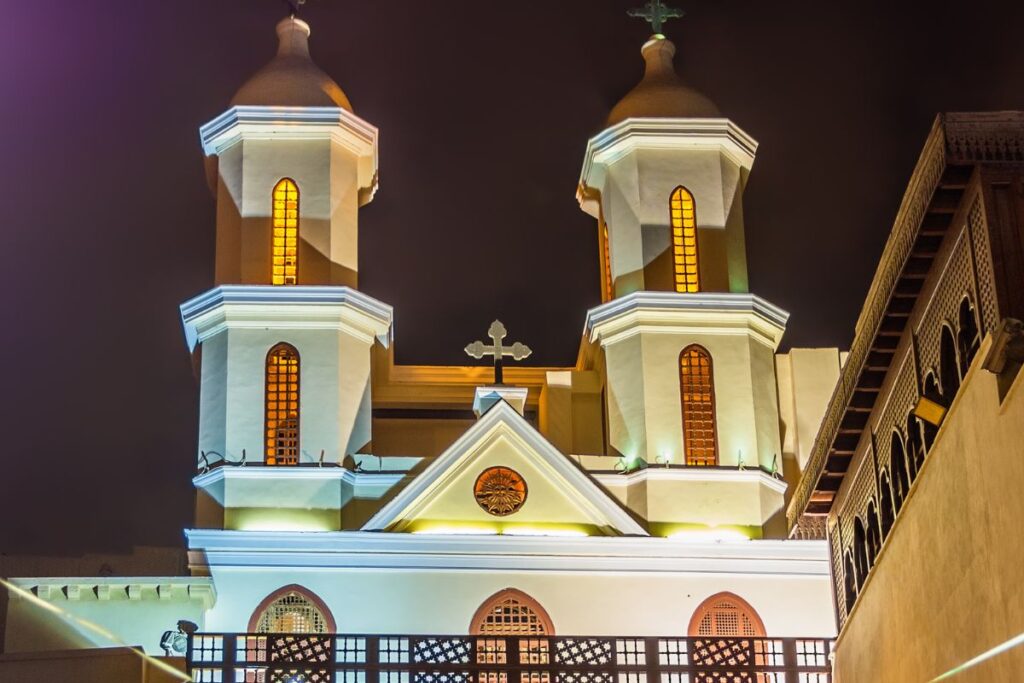
Coptic Greeks
Let’s take a captivating journey back to a time when the vibrant cultures of Egypt and Greece intertwined, painting a unique portrait of life in ancient Egypt. Imagine walking through the bustling streets of Alexandria, where Greek and Egyptian voices mingle in the marketplace. This was a place where two worlds met, creating a rich tapestry of traditions and languages.
In the heart of this cultural melting pot, the Egyptian Greeks emerged. They were a community who spoke a unique blend of Greek, infused with Egyptian loanwords—a true testament to their integrated lives. This community thrived from antiquity until the Islamic conquest of Egypt in the 7th century. Their language was a vibrant part of everyday life, even used in the sacred prayers of the Coptic Church.
Now, picture the Faiyum mummy portraits, stunning in their detail, showcasing this synthesis. They are not just art; they tell stories of a people who married local Egyptians, embraced local customs, and were eventually seen as Egyptians by the Roman rulers, despite their Greek origins. Their stories are a fascinating look at identity and adaptation.
Today, the modern Copts of Egypt continue this legacy of linguistic and cultural fusion. They predominantly speak Arabic and Coptic, the latter being the direct descendant of the Ancient Egyptian language. It’s in their churches that you might hear the Lord’s Prayer recited in Coptic, a beautiful echo of their ancient past.
So, isn’t it incredible how languages and cultures weave together over centuries? This story of the Egyptian Greeks is not just about the past; it’s a vivid reminder of the ongoing dance between identity and integration. What do you think was the most fascinating aspect of their cultural blend?
Ecumenical councils
Absolutely, let’s dive into some cool history about the early Christian councils and the key role played by the See of Alexandria. Picture this: back in the day, when Christianity was still shaping up its core beliefs, three major meetings, known as ecumenical councils, were the real game changers.
The first of these, the Council of Nicaea in 325 AD, was a blockbuster event with St. Alexander of Alexandria and Saint Hosius of Córdoba leading the charge. But the real star was Athanasius, a future Patriarch of Alexandria. This guy was pivotal in crafting the Nicene Creed, which, guess what? We still recite in many churches today across various denominations. And here’s a fun fact: the council gave the Patriarch of Alexandria the super important job of setting the date for Easter each year and sharing it with all other Christian churches.
Moving on, we hit the Council of Constantinople in 381 AD. This time, it was Patriarch Timothy of Alexandria who took the helm. And then there was the Council of Ephesus in 431 AD, presided over by none other than Cyril of Alexandria. Talk about a hat trick for Alexandria, right?
So, when you think about the roots of Christian theology and the shaping of its doctrines, the influence of these Alexandrian patriarchs is just epic. They were like the theological rockstars of their times! What more could you want in a historical deep dive?
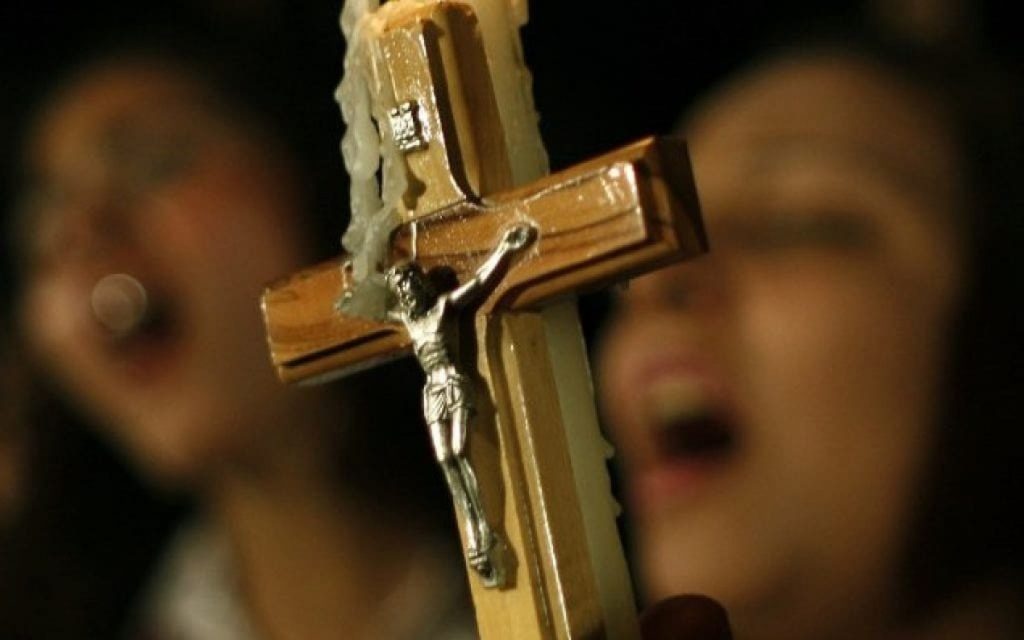
Council of Chalcedon
Absolutely! So, back in 451 AD, there was this major meeting called the Council of Chalcedon. After this council, the Church of Alexandria in Egypt split into two big groups. The first group, who were cool with what the council decided, were called Chalcedonians or Melkites. The others, who weren’t on board with the council’s decisions, were initially called Monophysites, which they didn’t really like. They preferred to call themselves Miaphysites. A little later, they also got the nickname Jacobites, named after a key figure, Jacob Baradaeus.
Now, most Egyptians were part of the Miaphysite group. Unfortunately, this led to some rough times under the Byzantine rule, as they faced quite a bit of persecution. It’s a fascinating chapter of history, showing just how much impact these religious councils had on the lives of everyday people.
Arab conquest of Egypt
Alright, let’s take a trip back to the year 641 AD when Egypt saw a major turning point in its history—the Arab conquest. Picture this: the Byzantine army, in all their glory, faces off against the determined Arab forces. Despite the formidable opposition, the Arabs were victorious and Egypt came under their rule.
But not everyone was ready to accept this new regime. Almost immediately, the local Egyptians began to push back. This wasn’t just a brief scuffle; their resistance stretched well into the 9th century. Imagine the spirit of those folks, refusing to give up their way of life without a fight!
Now, despite these political storms, Egypt’s religious landscape held its ground for quite a while. It remained predominantly Christian, with its churches and community vibe intact. However, it wasn’t to last forever. By the 14th century, things began to shift. The Coptic Christians, once the majority, found themselves becoming more and more sidelined.
Over the centuries, different Muslim rulers—like the Umayyads, Abbasids, Fatimids, Mamluks, and Ottomans—took turns at the helm. Unfortunately, life got pretty tough for the Coptic Christians during these times. They faced everything from having their churches shut down and destroyed, to being pressured into converting to Islam. Those who stood firm in their faith faced hefty taxes. It’s a story of resilience, struggle, and profound changes that shaped Egypt into the rich tapestry of cultures it is today.
What do you think? Could you imagine living through such transformative times?
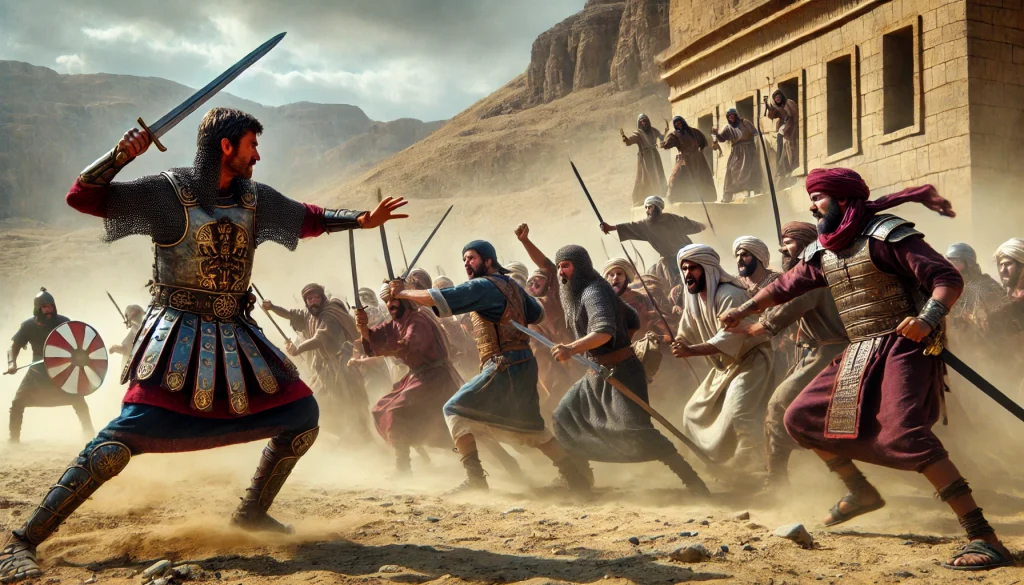
Copts in modern Egypt
Absolutely, let’s make this slice of history more engaging and relatable!
Imagine stepping back into a time when Egypt was under Ottoman rule. The Copts, an ancient Christian community with deep roots in Egypt, had a unique spot in society. They, along with other Christian groups, were part of something called the Armenian millet, a system that grouped them together for administrative purposes. Life wasn’t easy—being Christian in a predominantly Muslim empire meant paying special taxes and having limited access to political power. But hey, they were exempt from military service, which was a small silver lining.
Fast forward to the 19th century, and things start to look up for the Copts under Muhammad Ali’s rule. This guy was a game-changer. He scrapped the Jizya, the tax on non-Muslims, and opened up military roles to Egyptians, including Copts. It was a new dawn! Pope Cyril IV and later Khedive Isma’il Pasha really pushed the envelope, bringing reforms and encouraging Copts to dive into Egyptian public life. They started filling up roles as judges, and their influence in business and politics blossomed.
The Copts weren’t just about surviving; they thrived, contributing significantly to Egypt’s journey towards independence. They were pivotal in cultural milestones, too—like establishing the Coptic Museum in 1910 and the Higher Institute of Coptic Studies in 1954. Intellectual giants like Salama Moussa and Louis Awad emerged, shaping modern Egyptian thought.
Then came 1952, a year that turned Egypt upside down. Led by Gamal Abdel Nasser, a group of army officers staged a coup d’état, kicking out King Farouk and waving goodbye to the kingdom. Nasser was all about pan-Arab nationalism and socialism, and his policies shook everyone, including the Copts. They faced tough times with nationalization policies and felt a pinch on their identity and freedoms—things like building churches became a bureaucratic nightmare.
Despite these challenges, the Copts’ resilience and enduring identity as proud Egyptians are a testament to their deep-rooted history and contribution to the nation’s fabric. So, what more could you want in a tale of endurance and cultural impact?
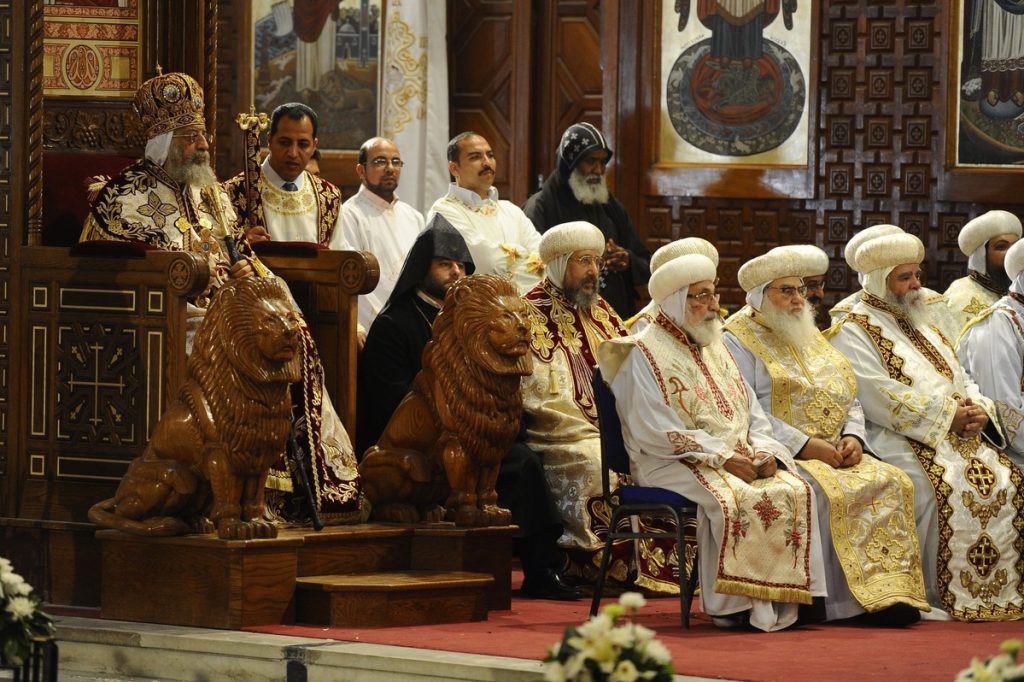
Socioeconomic
Absolutely! Here’s that information about the Copts in Egypt, presented in a more engaging and conversational style:
Did you know the Copts in Egypt are quite the achievers when it comes to education and the economy? These folks have a knack for landing white-collar jobs and are typically well-represented in fields that require a higher education. For instance, back in 2016, a study revealed that about 26% of Egyptian Christians, who are predominantly Copts, bagged university degrees. That’s no small feat!
Historically, Copts have been the brains behind the accounting desks, and believe it or not, in 1961 they owned a whopping 51% of all Egyptian banks. Talk about financial savvy! And it doesn’t stop there; they’ve always played a major role in managing the country’s state finances. At one point, they held 20% of the total state capital and made up 45% of government employment. Pretty impressive, right?
And when it comes to healthcare, Copts are right there in the frontline. Around 45% of all medical doctors and 60% of pharmacists in Egypt are Christians. This community really values education and hard work, partly because Coptic Christianity places a huge emphasis on literacy and building human capital.
Speaking of capital, let’s talk about the Sawiris family. This Egyptian Coptic Christian family owns Orascom—a giant conglomerate that spans telecommunications, construction, tourism, industries, and technology. As of 2008, Forbes pinned their net worth at a mind-blowing $36 billion. Can you imagine?
It’s clear that the Copts in Egypt aren’t just surviving; they’re thriving, thanks to their commitment to education and entrepreneurship. What an inspiring community!
Pharaonism
Pharaonism is a fascinating concept held by many Coptic intellectuals. It’s this idea that the roots of Coptic culture stretch back to the ancient, pre-Christian times of the Pharaohs. Imagine that—linking directly to the builders of the pyramids and the creators of the hieroglyphs! This belief not only deepens the Copts’ connection to the rich tapestry of Egyptian history but also, back in the early 20th century, it brought Coptic and Muslim communities closer together, bridging cultural divides. Interestingly, some scholars think that Pharaonism was influenced by Orientalism. It’s like a historical blend that highlights how interconnected our cultures and histories really are. What more could you want from such an epic heritage?
Church affairs
Alright, let’s dive into the vibrant world of Egypt’s Coptic Christians, shall we? Picture this: nestled in the bustling streets of Cairo, St. Mark’s Cathedral stands as a beacon for the Coptic Orthodox community. These folks are the heart of Egypt’s Christian population and have a rich history that’s as fascinating as it is deep.
Now, the Coptic Orthodox Church is kind of a big deal, not just in Egypt but around the world, thanks to a mix of emigration and some dedicated missionary work from folks in Europe, America, and beyond. This has led to a colorful tapestry of Christian denominations in Egypt, including Protestants (who are often called Evangelicals over there), Roman Catholics, Eastern Rite Catholics, and other Orthodox groups. But here’s a cool little tidbit: the term “Coptic” is special—it’s reserved just for the Egyptian natives. So when you hear about the “Coptic Evangelical Church,” that’s a nod to their native Egyptian roots, distinguishing them from the churches filled with expats and immigrants.
Now, let’s talk about something straight out of a movie. Back in 2012, when it was time to pick a new pope for Egypt’s Coptic Christians after the passing of Pope Shenouda III, they didn’t just hold a vote or something simple like that. No, they went full epic! In a ceremony that could give Hollywood a run for its money, a blindfolded boy reached into a glass bowl and picked out the name of the next pope, Bishop Tawadros, from among three candidates. How’s that for drama?
Isn’t it fascinating how traditions and modern life intertwine in the story of the Coptic Christians? So much history, so many stories, all woven into the fabric of today’s Egypt. What more could you want from such a captivating tale?
Copts in modern Ethiopia
Sure, let’s give that a more conversational spin!
Did you know that in Ethiopia, the Orthodox Tewahedo Church was actually a part of the Coptic Orthodox Church up until 1959? That’s right! It was then that the Coptic Orthodox Pope of Alexandria, Cyril VI, decided it was time for the Ethiopian church to have its own patriarch. Pretty cool, right? This was a significant moment because it marked the Ethiopian church’s move towards greater independence within the Christian world. What an epic chapter in their spiritual journey!
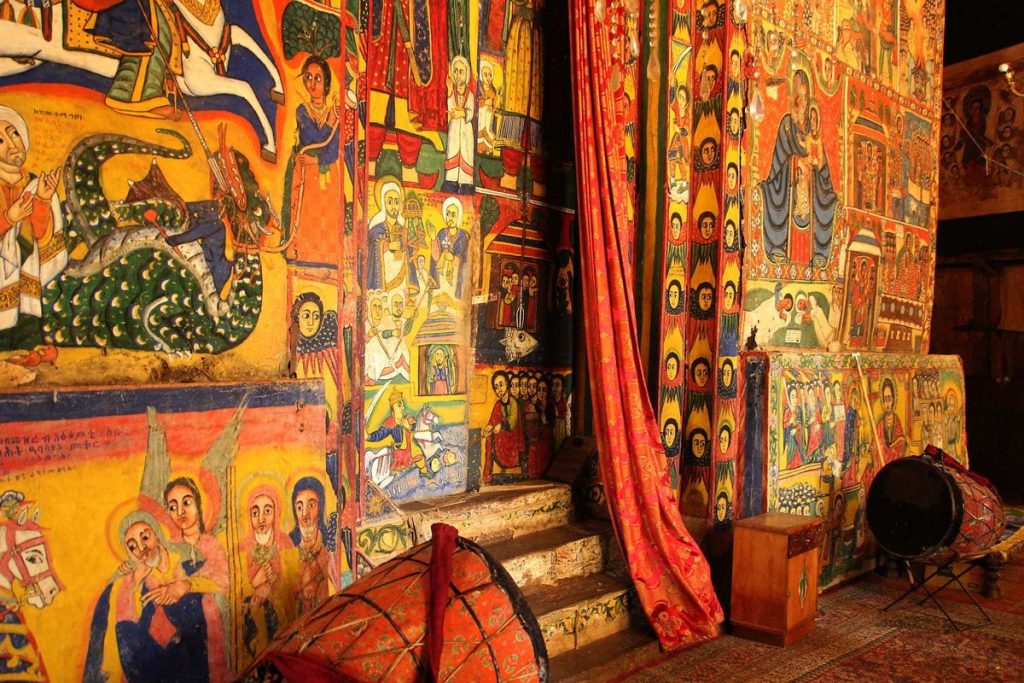
Copts in modern Sudan
Imagine stepping into the vibrant and complex tapestry of Sudan’s history, where the Coptic community, with roots deep and intertwined with Egypt, plays a significant part. The Holy Virgin Mary Coptic Orthodox Cathedral stands proudly in Khartoum, hinting at a long history of Copts in Sudan. These folks, both native and descendants of more recent Egyptian arrivals, mostly live in northern cities like Al Obeid, Atbara, and Port Sudan, to name a few.
Copts in Sudan are well-educated and have long contributed to various sectors like trading, banking, and even medicine. But life hasn’t always been smooth. There were times, especially during the Mahdist rule in the late 19th century and again in the mid-1960s, when Copts faced severe persecution, forcing many to convert to Islam or flee to safer havens. These waves of hardship didn’t just challenge their faith; they reshaped their lives and futures.
Fast forward to 1983, under Gaafar Nimeiry’s rule, when Sharia law was introduced, ramping up the pressure on Copts and other non-Muslims. Despite a brief period of hope with a secular candidate in the 1986 elections, the rise of the National Islamic Front saw a return to discrimination, with many Copts ousted from important roles.
The 1990s were particularly grim. Imagine being a Coptic pilot and standing firm in your faith to the point of facing execution rather than converting for convenience. This tragic event in 1991 became a stark warning for many Copts, who began to leave Sudan in droves.
Despite these challenges, the turn of the millennium brought some respite. In 2005, a Coptic Orthodox priest even snagged a government position. But the rollercoaster wasn’t over. The 2018 revolution brought a glimpse of hope with a Copt appointed to a significant transitional council, only for a 2019 military coup to dash these hopes and plunge Christians, including Copts, into a new wave of persecution.
Today, the fabric of the Coptic community in Sudan has been worn thin by emigration and the strains of ongoing conflict, yet they continue to cling to their faith and identity. What more could you ask for in a tale of resilience and enduring spirit, right?
Demographics
Navigating the demographics of the Coptic community in countries like Egypt, Sudan, and Libya can feel like wading through murky waters, given the sensitive and sometimes contentious religious dynamics in these Muslim-majority nations.
In Egypt, pinning down the exact number of Copts is particularly tricky. Local authorities don’t allow researchers to ask about religion in surveys, which means estimates vary widely. As of 2019, it’s generally accepted that Copts make up about 10% of the population. This could mean anywhere from 9.5 to 10 million people, depending on who you ask. But figures can swing dramatically—some say as low as 6%, others as high as 18%. The Egyptian government often reports lower numbers, while the Coptic Orthodox Church tends to claim higher. With such a range, it’s clear that getting a precise count isn’t straightforward. Despite these challenges, Copts are a well-integrated part of Egyptian society, particularly concentrated in Upper Egypt, in areas like Asyut and Qena.
The situation in Libya is even more uncertain. Estimates of the entire non-Muslim population hovered around 180,000 in 2013, which is about 3% of all Libyans. Yet, the Coptic Orthodox Church in Libya argues that it alone has about 300,000 members, including those not regularly attending services. The turbulence of the Libyan civil war from 2011 to 2015 saw a drastic reduction in these numbers, as many Christians, including Copts, fled the violence perpetrated by Islamist militants. At the height of the conflict, at least 200,000 Christians left the country to escape persecution from groups like Ansar al-Sharia and the Islamic State.
Understanding these communities in the context of their broader societies is no small feat, especially with the backdrop of political and religious strife complicating every number and narrative.
Diaspora
Let’s dive into the fascinating world of the Coptic diaspora, a vibrant community that spans far beyond the borders of Egypt! Did you know there are about 1 to 2 million Egyptian-born Copts living outside Egypt? That’s a huge number, right? These global Copts are scattered across the globe, from the bustling cities of the United States and Canada to the sunny shores of Australia.
Let’s start our journey in North America. The very first Coptic Orthodox church on this continent, St. Mark, was established in Toronto back in 1964. Hot on its heels, the United States welcomed its first Coptic church, also named St. Mark, in Jersey City, New Jersey. Fast forward to today, and there are over 500,000 Coptic Americans and more than 250 Coptic churches across the U.S.
Heading north to Canada, the Coptic community has grown significantly over the years. From an estimated 35,000 Copts in the early 2010s, the number has jumped to around 50,000 by 2017, with the majority living in Ontario, particularly in the Greater Toronto Area.
Now, hopping over to Australia, the Coptic population is thriving too, estimated between 30,000 and 100,000! The first Coptic Orthodox priest arrived down under in 1969, and since then, they’ve organized into two main dioceses in Melbourne and Sydney. There’s even a Coptic Catholic church that was consecrated in 2019.
But the Coptic presence isn’t just limited to these regions. There are smaller yet significant communities in places like Kuwait, the United Kingdom, France, South Africa, and even Jordan. For example, in Amman, Jordan, the Virgin Mary Coptic Orthodox Church boasts about 8,000 members, mostly Egyptians. Over in Europe, countries like Germany and Austria have seen growing Coptic communities, with Austria having about 10,000 Copts as of the 2020s.
Isn’t it incredible how far and wide the Coptic community has spread? From students starting new lives in Switzerland in the 1960s to a vibrant community flourishing in Jerusalem, the story of the Coptic diaspora is truly a testament to their enduring spirit and rich cultural heritage. What more could you want in a tale of perseverance and faith across the globe?
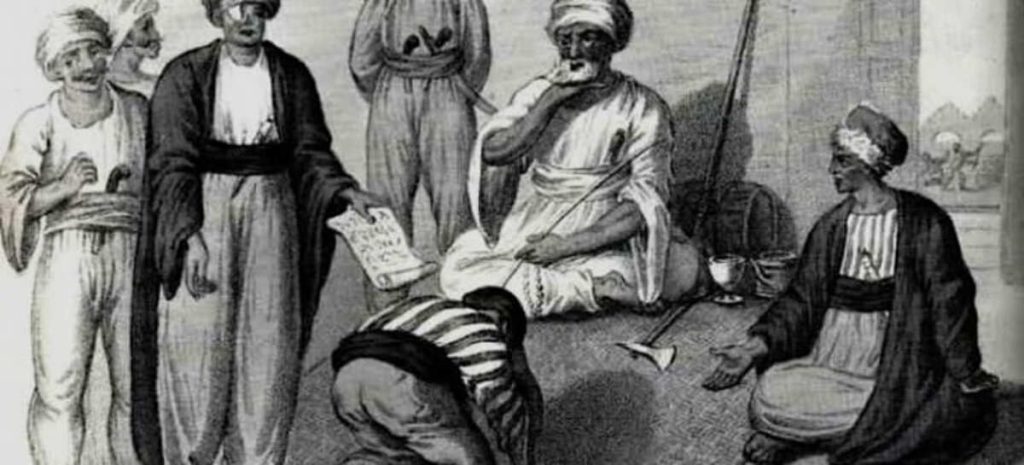
Language
Did you know that the Coptic language is the last stage of the ancient Egyptian language? It’s kind of epic when you think about it—the same language that was spoken by pharaohs thousands of years ago! While ‘Coptic’ technically refers to the type of script used, it’s also a term commonly used for the language written using this script. Introduced around the 1st century AD, it has been the go-to for writing Egyptian until around the 17th century. Imagine, it stuck around all that time!
Though Coptic isn’t spoken in everyday life anymore, it’s still alive and kicking in the rituals of Egypt’s native churches, like the Coptic Orthodox and Coptic Catholic Church. Pretty cool, right? And while it’s not commonly taught in Egypt these days, universities around the world still teach it—talk about global appeal!
Now, let’s dive into the dialects of Coptic, which spice up the language even more:
- Sahidic: This one’s from Upper Egypt and was pretty popular back in the day.
- Bohairic: The main dialect you’ll hear in Coptic churches today, especially in the Nile Delta area.
- Akhmimic, Lycopolitan (also coolly known as Subakhmimic), Fayyumic, and Oxyrhynchite: These are the lesser-known dialects, each with its unique flair.
Isn’t it fascinating how a language can tell the story of a place and its people over millennia? What more could you want from a trip down linguistic lane?
Calendar
Hey, have you ever heard of the Coptic calendar? It’s also known as the Alexandrian calendar and it’s pretty fascinating. This calendar is not just a relic of the past; it’s still in use today by the Coptic Orthodox Church and, with a few tweaks, by Ethiopia as their official calendar. What’s really cool about this calendar is that it’s based on the ancient Egyptian calendar.
Now, let’s dive a bit into history. The ancient Egyptian calendar had a bit of a problem known as calendar creep, where the dates didn’t quite line up with the seasons as years passed. To fix this, a big reform was proposed back in 238 BC during the time of Ptolemy III. This proposal, called the Decree of Canopus, suggested adding an extra day every four years (sounds a bit like our leap year, right?). However, the Egyptian priests weren’t too keen on changing their traditional ways, so the idea didn’t catch on immediately.
It wasn’t until 25 BC, when the Roman Emperor Augustus stepped in, that the Egyptian calendar was formally aligned with the Julian calendar introduced by the Romans. This change helped keep the calendar synchronized with the seasons. This newer version of the calendar came to be known as the Coptic calendar.
What’s intriguing is that while the Coptic and Ethiopian calendars are similar, they have their unique twists with different names and numbers for the years and months. Imagine having a calendar that connects you directly to the streams of ancient history and culture—pretty epic, right?
Coptic year
The Coptic calendar, a vibrant legacy of ancient Egyptian timekeeping, is still alive and thriving, especially among Egypt’s farmers who use it to monitor their agricultural seasons. This calendar fascinatingly comprises 13 months: 12 months each have 30 days and there’s an extra month tacked on at the year’s end. This extra month gets interesting because it includes either 5 or 6 days, depending on whether it’s a leap year or not.
Now, let’s talk about the start of the Coptic year—it’s quite the special occasion! The year kicks off on August 29th according to the Julian Calendar, but here’s a twist: if it’s the year before a Julian leap year, the start shifts to August 30th. The Coptic leap year mirrors the Julian system, ensuring that the leap year’s extra month always spans six days.
One of the highlights of the Coptic calendar is the Feast of Neyrouz, which celebrates the Coptic New Year. This celebration lands on the first day of Thout, the very first month of their year. For most years between AD 1901 and 2099, this date aligns with September 11th, but shifts to September 12th right before a Gregorian leap year.
The Coptic years are numbered from 284 AD, marking the reign of Roman Emperor Diocletian, known for his severe persecution of Christians in Egypt. This period’s harsh history is why the years are labeled A.M., standing for Anno Martyrum, or “Year of the Martyrs.”
Isn’t it fascinating how this ancient calendar still plays a crucial role in daily life and cultural practices in Egypt? What’s your take on blending such traditional timekeeping with modern day needs?
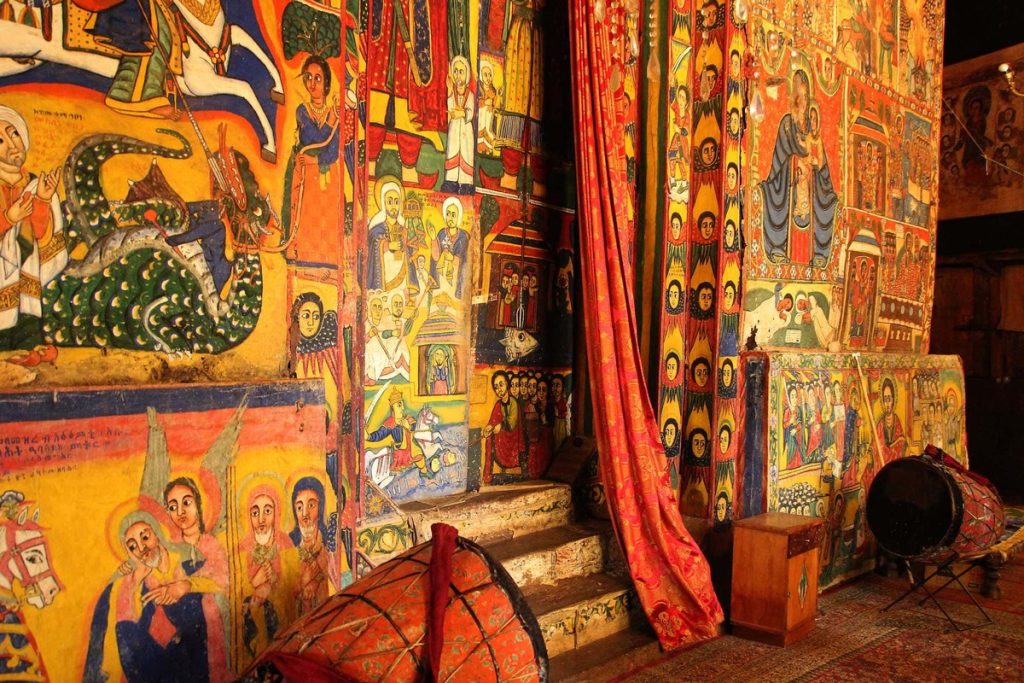
Genetics
So, who are the Copts? They’re the Christian minority in Egypt, direct descendants of the ancient Egyptians. Before Islam arrived in Egypt, everyone there was known simply as Egyptian. But as time went on, those who converted to Islam generally stopped referring to themselves as Egyptians in that way, leaving the term for the Christian community.
Let’s dive into their genetic makeup, which tells a really cool story of heritage and history. Studies have shown that about 45% of Copts in Sudan belong to the Haplogroup J in their Y-DNA, which is a category that traces male lineage. Another significant chunk, about 21%, belong to the E1b1b clade. Both of these groups are pretty common among other Afroasiatic-speaking communities in the region, like the Beja and Ethiopians, and even among Sudanese Arabs.
What about their maternal genetics? It turns out, Copts in Sudan carry mitochondrial DNA (that’s the DNA you get from your mom) that places them in the macrohaplogroup N, closely linking them with other local groups like the Berbers and Ethiopians. The most frequent subgroup they belong to is U6, followed by T.
Now, get this: there’s a specific genetic signature called the Coptic component, which is majorly found in Egyptian Copts. This signature suggests a deep-rooted connection with other populations from Northeast Africa and the Middle East, going back centuries. It reflects an ancestry that predates the later Arabian influences seen in other Egyptian populations.
When looking at Egyptians and Copts in Sudan, researchers found very little difference in their genetics, showing they share a ton of history. Both groups have a significant amount of European and Middle Eastern ancestry. Despite the Copts’ relative isolation since moving to Sudan, they’ve maintained a distinct genetic profile with only minimal mixing with the local populations.
In a nutshell, both Muslim and Christian Egyptians share the same genetic roots, which is pretty amazing considering the rich and complex history of the region. It’s like finding a direct link to the stories of ancient civilizations right in our DNA!
Isn’t it fascinating how genetics can tell us stories of migrations, history, and even the interactions between ancient communities? What more could you want when looking into the past?
Exploring the Rich Tapestry of Coptic Culture
Have you ever dived into the intriguing world of Coptic culture? It’s absolutely fascinating! Originating from the sands and stories of Egypt, this culture offers a blend of history, art, and spirituality that’s just waiting to be explored.
Let’s start with the basics—the term ‘Coptic’ itself ties back to Egypt, and it’s used to describe Egyptian Christians today. But there’s so much more to it! For instance, ever heard of the Coptic Orthodox Church? It’s one of the oldest Christian denominations in the world, steeped in tradition and rich rituals that echo through time.
And the art? Coptic art is stunning, with its unique icons and intricate textiles that tell tales of faith and community. It’s like stepping into a gallery of history and devotion, painted and woven by skilled hands.
Then there’s the Coptic language, a direct descendant of the ancient Egyptian tongue spoken during the pharaohs‘ time. Although not widely spoken today, it lives on in the church’s liturgies, offering a direct line to the past.
The Coptic Museum in Cairo is a treasure trove for anyone eager to see this heritage up close. It houses an impressive collection that showcases the artistic and spiritual life of the Coptic community through the ages.
But it’s not just about history. The Coptic community is vibrant and diverse, stretching from Egypt to the diasporas around the world. There are prominent Copts making their mark globally, and their contributions shine a light on the modern Coptic experience.
Interested in literature? Coptic literature, along with its Arabic counterpart, offers a glimpse into the thoughts and stories of a community that has both preserved its heritage and adapted to changing times.
And for those of you who love diving deeper, Coptology is a field dedicated to the study of all things Coptic, from archaeology to history and beyond. Whether it’s exploring the role of Christianity in places like Egypt, Sudan, and Libya, or learning about the lives of Coptic saints, there’s a whole world to explore.
So, what more could you want? Whether you’re a history buff, art lover, or someone curious about the spiritual paths of different cultures, the Coptic world has something to offer. Let’s keep exploring together!
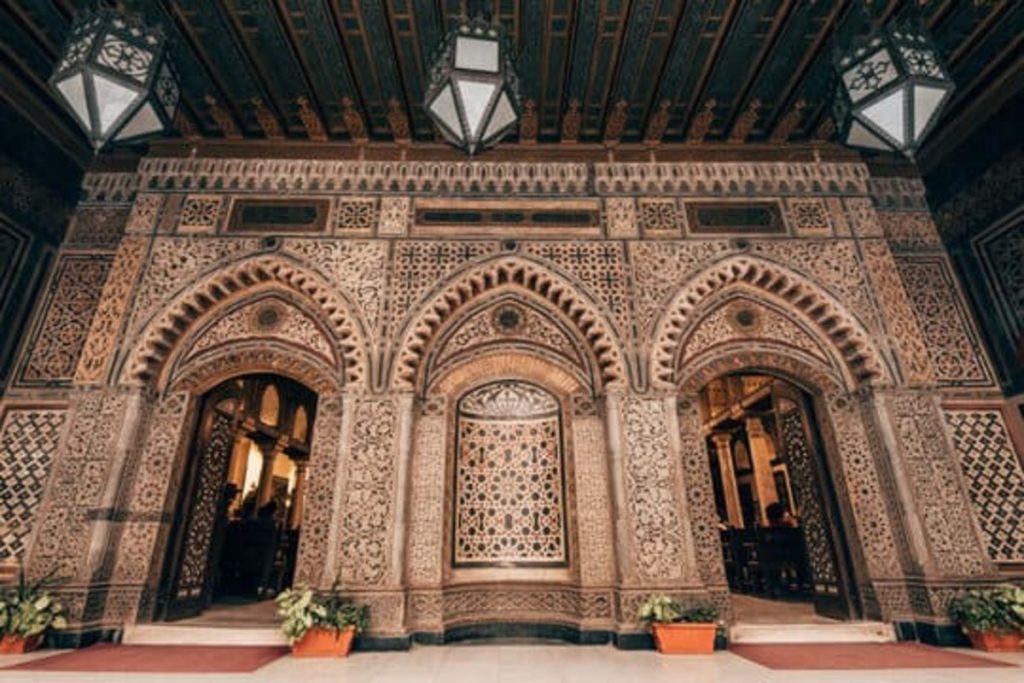
Footnotes
Have you ever wondered about the Christian population in Egypt, particularly the Copts? It’s fascinating how estimates can vary so widely! For instance, back in 2017, the Wall Street Journal suggested that there are around 9.5 million Copts, making up about 10% of Egypt’s population. But get this—just two years later, the Associated Press reported a similar figure of 10 million Copts.
Now, let’s dive a bit deeper into these numbers because they get even more intriguing. In 2015, the Wall Street Journal highlighted a bit of a disagreement: the Egyptian government estimated about 5 million Copts, but the Coptic Orthodox Church claimed there could be as many as 15-18 million. That’s a huge difference, right? It suggests they might represent anywhere from 6% to 18% of the population. And back in 2004, even the BBC was trying to pin down the numbers, estimating that Copts were somewhere between 5% and 10% of the population.
Moreover, the CIA World Factbook in 2015 lined up with the usual estimates, stating that about 10% of the Egyptian population is Christian, which includes both Copts and non-Copts. And in 2017, the Minority Rights Group gave us an even broader range to consider, estimating that Copts make up between 4.7 and 7.1 million people, or about 6% to 9% of the population, though some guesses stretch that to as much as 10% to 20%.
So, why all the different numbers? Well, reliable figures are hard to come by, making any precise count challenging. But isn’t it intriguing to see how these estimates not only reflect numbers but also the diverse perspectives and perhaps even the political dynamics within Egypt?
Frequently Asked Questions About the Coptic Community
1-Is the Coptic language still spoken?
Although no longer used in everyday conversation, the Coptic language lives on in the liturgy of the Coptic Orthodox Church. It’s a direct descendant of the ancient Egyptian language and carries the echoes of a civilization that dates back thousands of years.
2-What language is Coptic similar to?
Coptic is closely related to the ancient Egyptian languages, written using the Greek alphabet with the addition of a few Demotic signs. Its grammar and vocabulary are akin to other Hamito-Semitic languages.
3-Is Coptic the same as Arabic?
No, Coptic and Arabic are quite different. Coptic is an Afro-Asiatic language rooted in ancient Egyptian, while Arabic is a Semitic language that spread to Egypt much later.
4-Is Coptic a Greek language?
Not exactly. While Coptic uses the Greek alphabet and has incorporated some Greek vocabulary, it is fundamentally rooted in the ancient Egyptian languages.
5-What religion was Egypt before Islam?
Before the spread of Islam in the 7th century, Egypt was predominantly Christian, and before that, it followed ancient Egyptian polytheism.
6-Is Egypt a Coptic country?
Egypt has a significant Coptic minority, but it is predominantly Muslim. Copts are an integral part of Egypt’s cultural and historical identity.
7-Why is the Coptic language considered dead?
The Coptic language ceased to be spoken in everyday contexts by the 17th century, transitioning exclusively to a liturgical language for the Coptic Orthodox Church.
8-How do you say “hello” in Coptic?
In Coptic, you can say “esmok eirene” to mean “peace be with you,” a common greeting similar to the Arabic “salaam.”
9-What is Coptic Egyptian DNA?
Coptic Egyptian DNA refers to the genetic makeup of the Coptic people, who are direct descendants of the ancient Egyptians, with minimal mixing with Arab populations.
10-Do Copts believe Jesus is God?
Yes, Copts believe in the divinity of Jesus Christ, consistent with mainstream Christian theology.
11-How are Copts treated in Egypt?
While Copts are active in all aspects of Egyptian society, they have faced periods of discrimination and violence, often struggling with restrictions on church building and public expressions of faith.
12-Is Christianity legal in Egypt?
Yes, Christianity is legal in Egypt, and the country hosts a vibrant Christian community, although Copts sometimes face challenges related to religious freedom.
13-What Bible do Copts use?
Copts use the Coptic Orthodox version of the Bible, which includes the Old and New Testaments and is translated into Coptic. The liturgical readings are also available in Arabic.
14-What religion is Coptic?
The term “Coptic” refers specifically to Egyptian Christians, primarily associated with the Coptic Orthodox Church.
Conclusion
Embarking on the journey through the rich tapestry of Coptic culture and history reveals a community steadfast in faith and vibrant in heritage. From the sands of ancient Egypt to the modern streets of Cairo, the Copts have maintained a unique identity, contributing profoundly to the religious, cultural, and social fabric of Egypt. Their resilience in the face of adversity and their enduring spirit showcases a profound legacy that continues to influence both their homeland and the global Christian community.
As we’ve explored their past achievements, current challenges, and the vibrant life they lead today, it’s clear that the story of the Copts is not just about a minority community in Egypt—it’s a broader narrative about survival, identity, and faith that resonates across generations and borders. What more could you want from such an epic saga?

